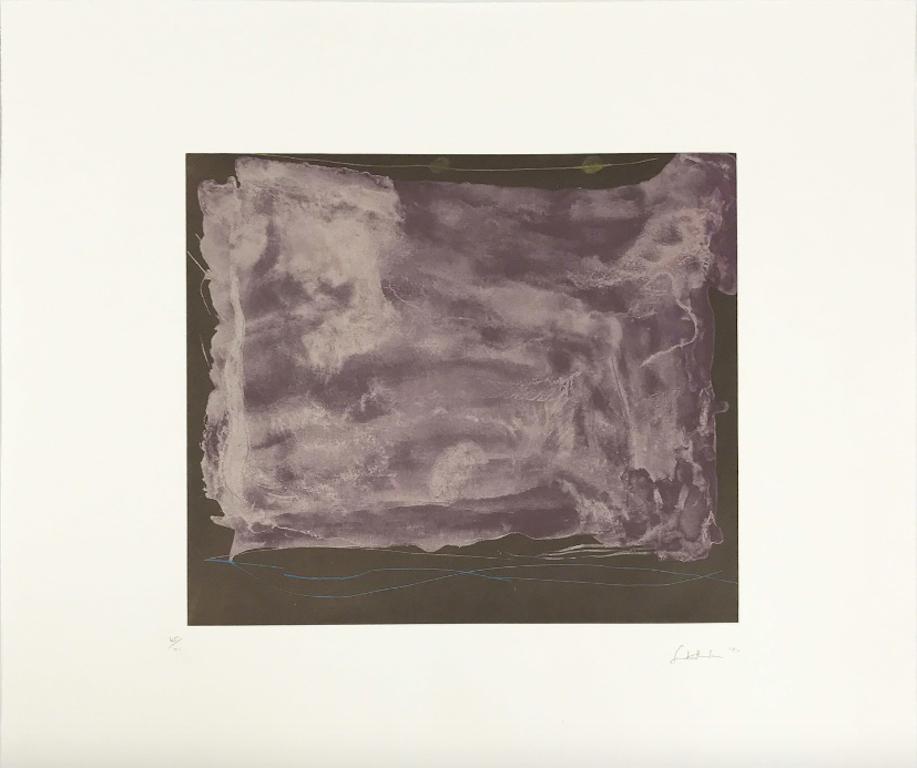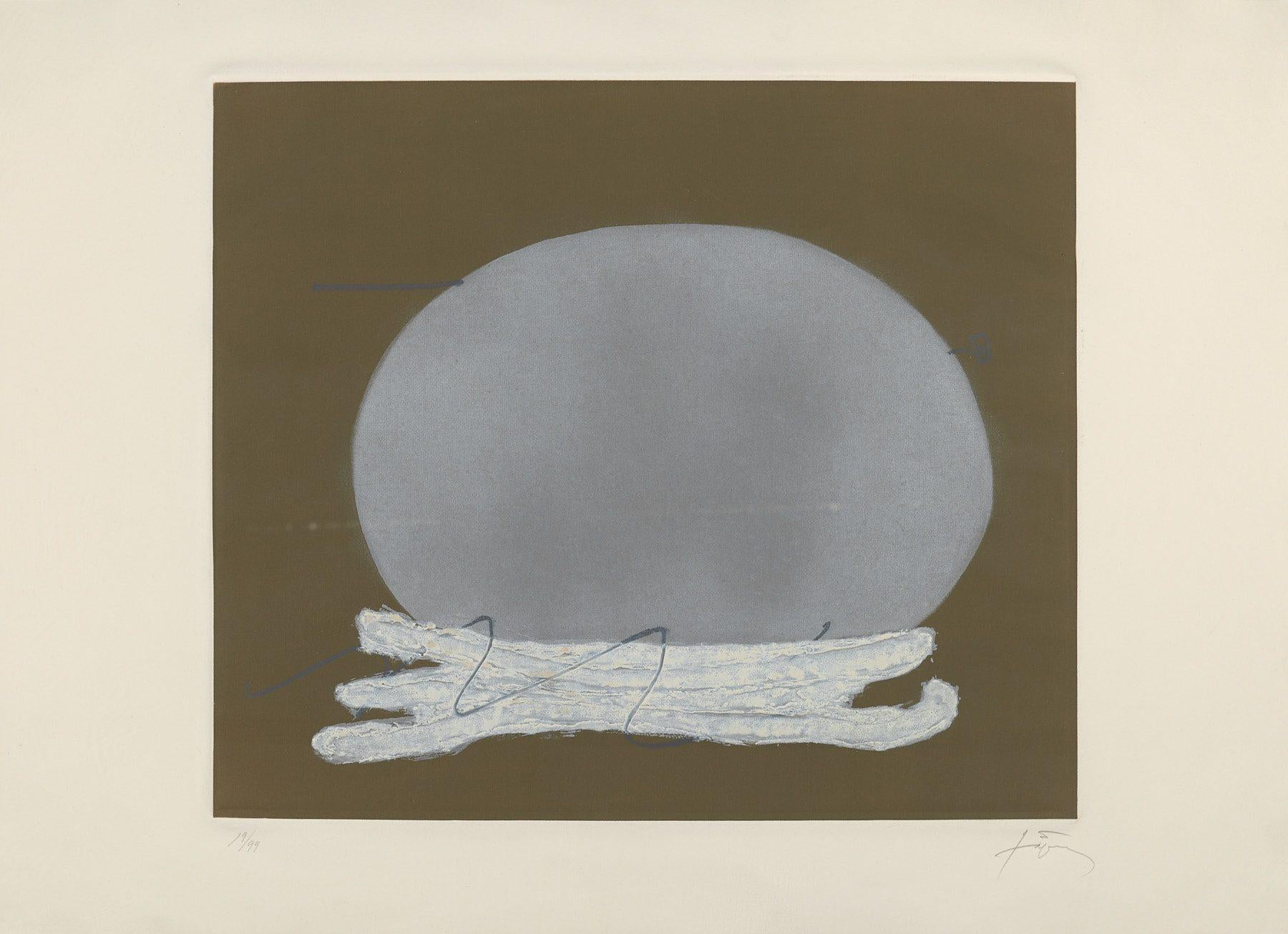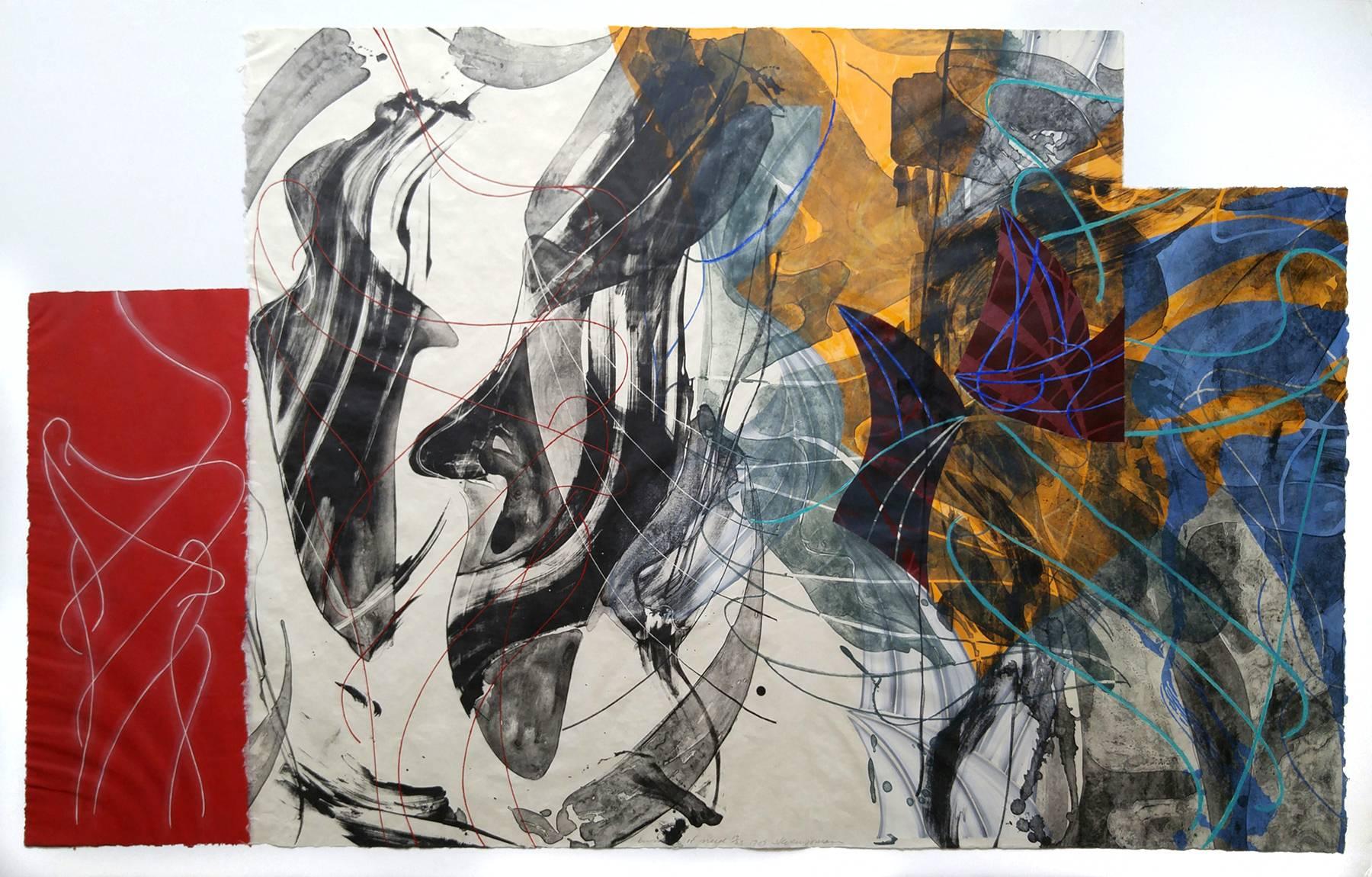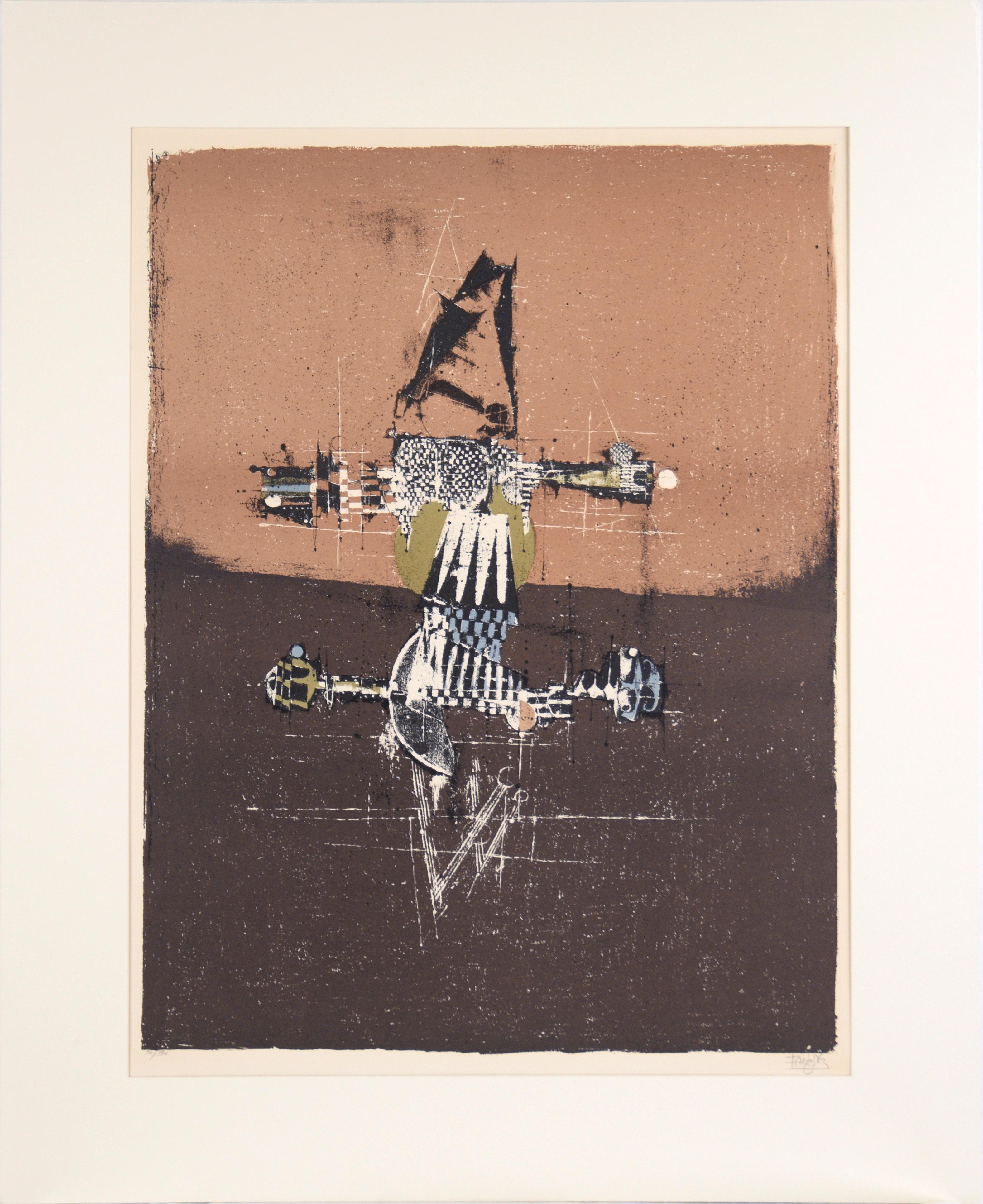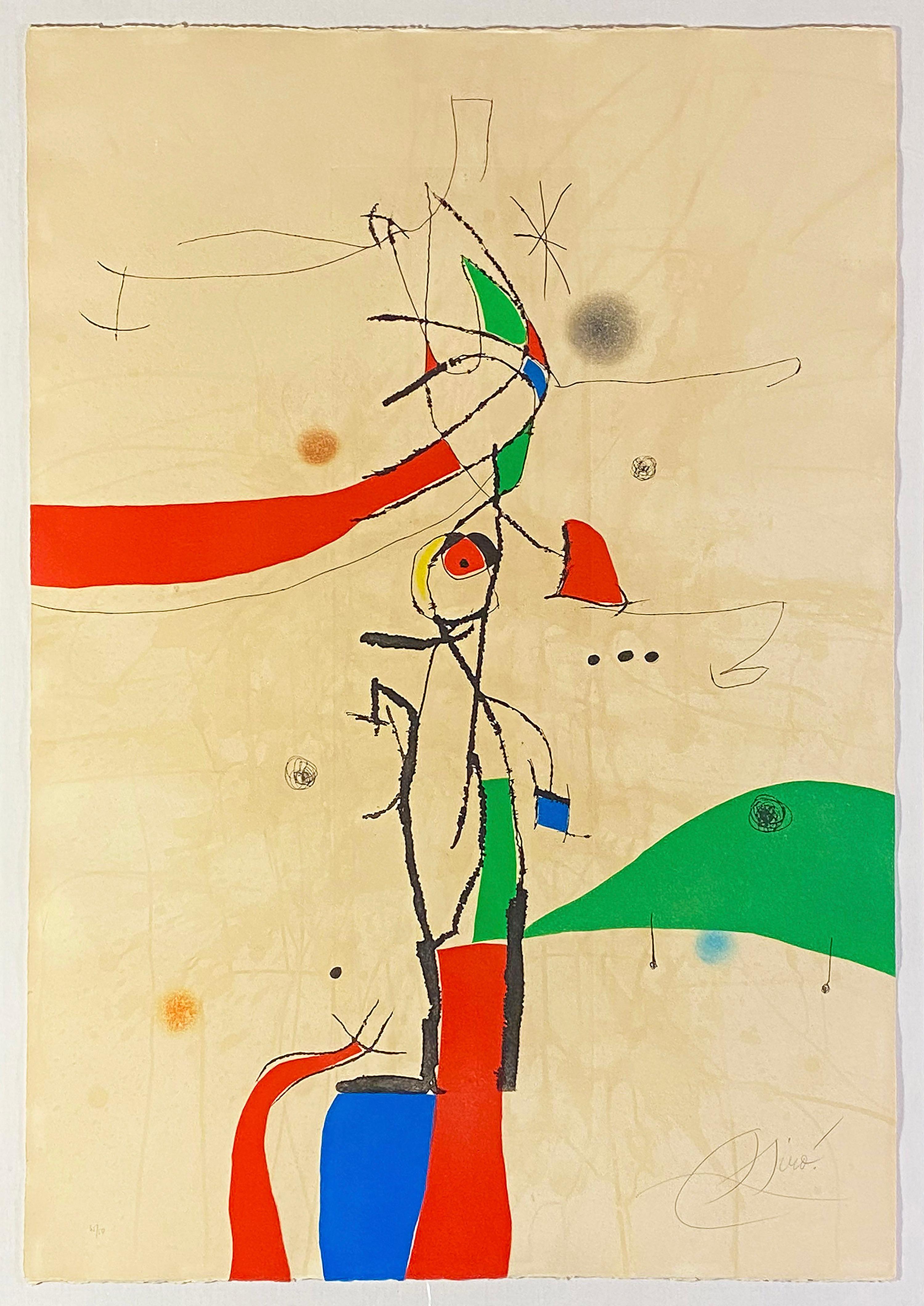Items Similar to CONRAD MARCA-RELLI Limited ed. Etching & Aquatint American Modern, Contemporary
Want more images or videos?
Request additional images or videos from the seller
1 of 5
Conrad Marca-Relli 1CONRAD MARCA-RELLI Limited ed. Etching & Aquatint American Modern, Contemporary1977
1977
About the Item
Conrad Marca Relli - Composition VIII
Date of creation: 1977
Medium: Etching and aquatint on Gvarro paper
Edition: 75 + AP + HC
Size: 56 x 76 cm
Condition: In very good conditions and never framed
Observations: Etching and aquatint on Gvarro paper hand signed and numbered in pencil by Conrad Marca-Relli. Published in 1977 by Polígrafa Editions, Barcelona. Plate size: 63 x 44 cm.
Even though Marca-Relli was one of the founders of the New York's Abstract Expressionism along other artists such as Pollock, Motherwell of de Kooning, these kind of works were the ones that took him apart of that movement. Marca-Relli's abstraction involves shapes opposed to the lack of form standing in his fellow friends and artists' works.
ABOUT THE ARTIST
Conrad Marca-Relli, son of Italian parents was born in Boston, Massachusetts, in 1913 and is considered the father of the New York abstract expressionism.
In 1930 he studied design at the Cooper Union for one year and worked for the Works Progress Administration until 1940. Conrad Marca-Relli served for the U.S. Army during World War II for four years, from 1941 to 1945. Till then, the work of Mark-Relli was characterized by his depictions of circus-themed or urban and architectural landscapes, the result of the influence of Italian artist Giorgio de Chirico.
During the latest years of the 40’s, he returned to Manhattan and took part along with other artists, most of them war veterans, the "Downtown group" whose workshop was in Greenwich Village. In 1949 this group formed the New York School, in which artists like Willem de Kooning, Robert Motherwell, Franz Kline, Jackson Pollock and Robert Rauschenberg were also part of, and who dedicated its existence to explore the avant-garde of the moment. In 1948, Conrad Marca-Relli showed his work to the public for the first time in an exhibition organized by Leo Castelli called "Ninth Street Show”, considered as the first exhibition of abstract expressionism.
During the era of the 50s, Marca-Relli definitely explores abstraction and combines it with elaborated collages. It is said that Mark-Relli began working the art of collage due to lack of paint, and then discovered how to represent some light effects like the reflection in certain surfaces such as adobe. As he was investigating this technique, his works were became increasingly complex, in the use of colors, shapes and textures. In these years, Marca-Relli taught at Yale University and bought a house at the Springs, in the vicinity of East Hampton, a community that began to develop as an artist colony. Interestingly, the home of Marca-Relli was beside Pollock’s, with whom he became close friends. It would be Marca-Relli himself who identified the body of his friend to the police the day of his death.
In the 60s, Marca-Relli uses industrial vinyl to give texture to his works and shapes are outlined with painted, or real nails, emphasizing the three dimensional plasticity. In 1967 he received his first retrospective exhibition at the Whitney Museum of Modern Art.
Conrad Marca-Relli died in 2000 after living in cities like London, Paris, Ibiza and Parma.
- Creator:Conrad Marca-Relli 1 (1913 - 2000, American)
- Creation Year:1977
- Dimensions:Height: 22.05 in (56 cm)Width: 29.93 in (76 cm)
- Medium:
- Movement & Style:
- Period:
- Condition:
- Gallery Location:Madrid, ES
- Reference Number:1stDibs: LU1033114024452
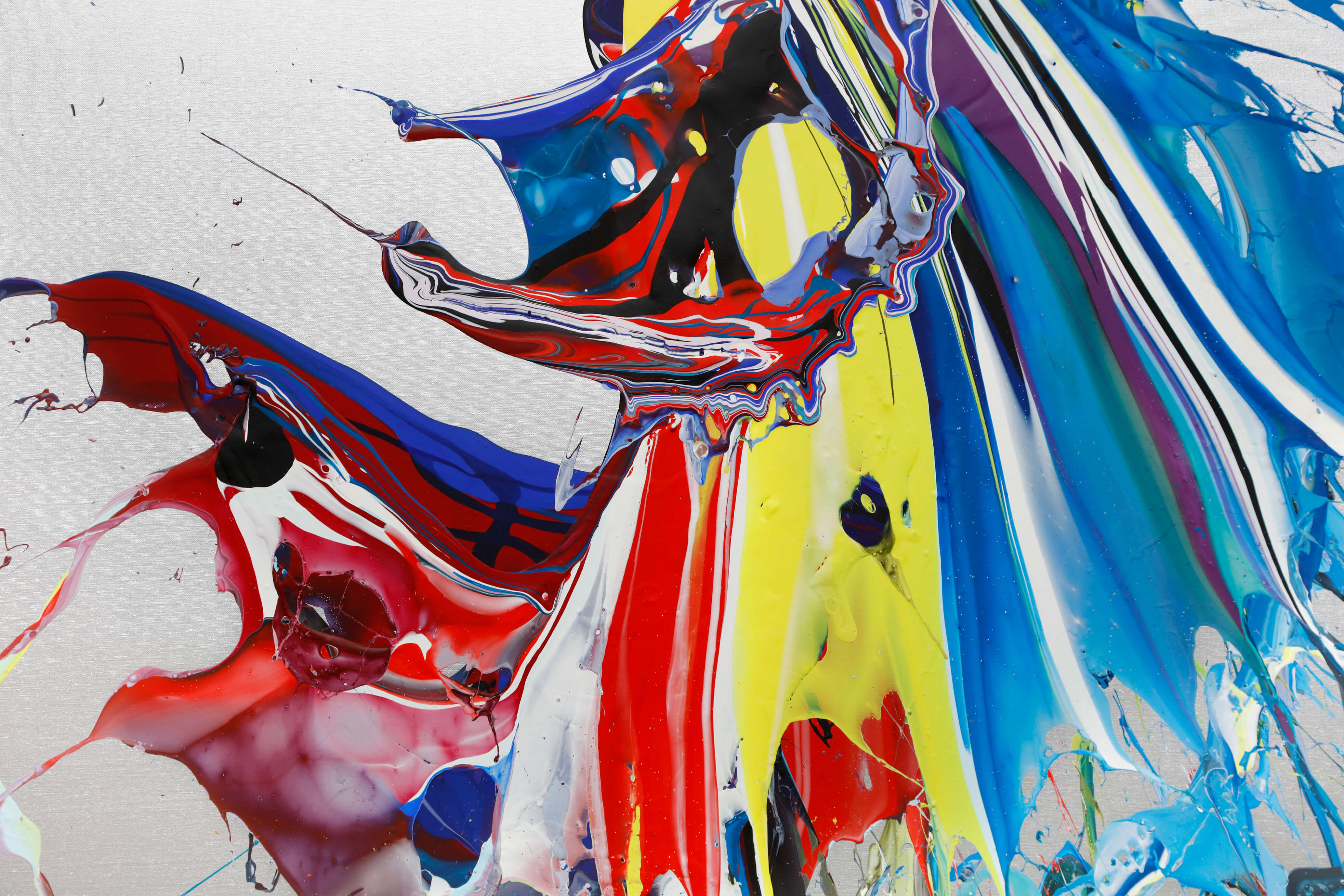
About the Seller
5.0
Vetted Seller
These experienced sellers undergo a comprehensive evaluation by our team of in-house experts.
Established in 2011
1stDibs seller since 2018
158 sales on 1stDibs
Typical response time: 3 hours
- ShippingRetrieving quote...Ships From: Madrid, Spain
- Return PolicyA return for this item may be initiated within 14 days of delivery.
More From This SellerView All
- Albert Ràfols Casamada - FRUITES D'ESTIU Etching Spanish Abstraction ModernBy Albert Rafols CasamadaLocated in Madrid, MadridAlbert Ràfols Casamada - FRUITES D'ESTIU Date of creation: 2004 Medium: Etching and aquatint on Vélin d'Arches paper Edition: 100 + 10 H.C. + 10 PA Size: 80 x 60 cm Condition: In ver...Category
2010s Abstract Abstract Prints
MaterialsPaper, Etching, Aquatint
- CONRAD MARCA-RELLI Limited ed. Etching & Aquatint American Modern, ContemporaryBy Conrad Marca-Relli 1Located in Madrid, MadridComposition IV Date of creation: 1977 Medium: Etching and aquatint on Gvarro paper Edition: 75 + AP + HC Size: 56 x 76 cm Observations: Etching and aquatint on Gvarro paper hand sign...Category
1970s Abstract Abstract Prints
MaterialsEtching, Aquatint
- CONRAD MARCA-RELLI Limited ed. Etching & Aquatint American Modern, ContemporaryBy Conrad Marca-Relli 1Located in Madrid, MadridConrad Marca Relli - Composition I Date of creation: 1977 Medium: Etching and aquatint on Gvarro paper Edition: 75 + AP + HC Size: 56 x 76 cm Condition: In very good conditions and n...Category
1970s Modern Abstract Prints
MaterialsPaper, Etching, Aquatint
- CONRAD MARCA-RELLI Limited ed. Etching & Aquatint American Modern, ContemporaryBy Conrad Marca-Relli 1Located in Madrid, MadridConrad Marca-Relli - Composition IX Date of creation: 1977 Medium: Etching and aquatint on Gvarro paper Edition number: 66/75 Size: 56 x 76 cm Condition: In very good conditions and ...Category
1970s Modern Abstract Prints
MaterialsPaper, Etching, Aquatint
- CONRAD MARCA-RELLI Limited ed. Etching & Aquatint American Modern, ContemporaryBy Conrad Marca-Relli 1Located in Madrid, MadridConrad Marca Relli - Composition XV Date of creation: 1977 Medium: Etching and aquatint on Gvarro paper Edition number: 47/75 Size: 56 x 76 cm Condition: In very good conditions and ...Category
1970s Modern Abstract Prints
MaterialsPaper, Etching, Aquatint
- CONRAD MARCA-RELLI Limited ed. Etching & Aquatint American Modern, ContemporaryBy Conrad Marca-Relli 1Located in Madrid, MadridConrad Marca-Relli - Composition VII Date of creation: 1977 Medium: Etching and aquatint on Gvarro paper Edition number: 35/75 Size: 56 x 76 cm Condition: In very good conditions and...Category
1970s Modern Abstract Prints
MaterialsPaper, Etching, Aquatint
You May Also Like
- Soho DreamsBy Helen FrankenthalerLocated in New York, NY1987 Etching, aquatint and drypoint in colors, on wove paper Sheet: 15 3/4 x 18 3/4 in. Edition of 71 Signed, dated and numbered in pencil, lower marginCategory
1980s Abstract Expressionist Abstract Prints
MaterialsPaper, Drypoint, Etching, Aquatint
- An Interior Language IVLocated in New York, NYAbout the Series: Gilliam began the series Life Lines in 2017 after recently coming into possession of MRI scans of her brain. The scans, which she spent hours pouring over, both fas...Category
2010s Abstract Abstract Prints
MaterialsPhotographic Paper, Photogram, Etching, Aquatint
- Spanish Artist signed limited edition original art print numbered etchingBy Antoni TàpiesLocated in Miami, FLAntoni Tapies (Spain, 1923-2012) 'Oval i blanc', 1982 etching, aquatint, carborundum on paper Guarro Biblos 250g. 22.1 x 30 in. (56 x 76 cm.) Edition of 99 Unframed ID: TAP1162-018 H...Category
1980s Abstract Prints and Multiples
MaterialsCarbon Pencil, Etching, Aquatint, Paper
- Burden of Need, 39x64 Multi media with hand coloring and collageBy Steven SormanLocated in Southampton, NYSteve Sorman has had over 80 solo artist exhibitions throughout the United States . I have included, just for reference, some images of his museum show so that you can see the body...Category
1980s Abstract Abstract Prints
MaterialsOil Pastel, Ink, Mixed Media, Handmade Paper, Aquatint
- "Haarlem" Aquatint Etching on PaperBy Johnny FriedlaenderLocated in Soquel, CABold abstract aquatint by Johnny Friedlaender (Polish-French, 1912-1992). Comprised of two main sections, this piece is full of detail and texture. The upper layer is a reddish tan, whereas the bottom layer is a rich brown. Geometrical shapes are arranged such that they almost form mirror images of each other, but vary enough to create interest and a sense of movement. Signed in the lower right corner. Numbered 56/350 in the lower left corner. Includes original certificate of authenticity. Presented in a new cream mat with foamcore backing. Mat size: 42"H x 32"W Paper size: 33.75"H x 24.5"W Johnny Friedlaender was a leading 20th century artist, whose works have been exhibited in Germany, France, Netherlands, Italy, Japan and the United States. He has been influential upon other notable artists, who were students in his Paris gallery. His preferred medium of aquatint etching is a technically difficult artistic process, of which Friedlaender has been a pioneer. Johnny Gotthard Friedlaender was born in Pless (Silesia) and his early studies were in Breslau under Otto Mueller. In 1936 Friedlaender journeyed to Czechoslovakia, Switzerland, Austria, France and Belgium. At the Hague he held a successful exhibition of etchings and watercolours. He fled to Paris in 1937 as a political refugee of the Nazi regime with his young wife, who was an actress. In that year he held an exhibition of his etchings which included the works: L 'Equipe and Matieres et Formes. From 1939 to 1943 he was interned in a series of concentration camps, but survived against poor odds. After freedom in 1944 Friedlaender began a series of twelve etchings entitled Images du Malheur with Sagile as his publisher. In the same year he received a commission to illustrate four books by Freres Tharaud of the French Academy. In 1945 he performed work for several newspapers including Cavalcade and Carrefour. In the year 1947, he produced the work Reves Cosmiques, and in that same year he became a member of the Salon de Mai, which position he held until 1969. In the year 1948 he began a friendship with the painter Nicolas de Stael and held his first exhibition in Copenhagen at Galerie Birch. The following year he showed for the first time in Galerie La Hune in Paris. After living in Paris for 13 years, Friedlaender became a French citizen in 1950. Friedlaender expanded his geographic scope in 1951, and exhibited in Tokyo in a modern art show. In the same year he was a participant in the XI Trienale in Milan, Italy. By 1953 he had produced works for a one-man show at the Museum of Neuchâtel and exhibited at the Galerie Moers in Amsterdam, the II Camino Gallery in Rome, in São Paulo, Brazil and in Paris. He was a participant of the French Italian Art Conference in Turin, Italy that same year. Friedlaender accepted an international art award in 1957, becoming the recipient of the Biennial Kakamura Prize in Tokyo. In 1959 he received a teaching post awarded by UNESCO at the Museum of Modern Art in Rio de Janeiro. By 1968, Friedlaender was travelling to Puerto Rico, New York and Washington, D.C. to hold exhibitions. That year he also purchased a home in the Burgundy region of France. 1971 was another year of diverse international travel including shows in Bern, Milan, Paris, Krefeld and again New York. In the latter city he exhibited paintings at the Far Gallery, a venue becoming well known for its patronage of important twentieth century artists. From his atelier in Paris Friedlaender instructed younger artists who themselves went on to become noteworthy, among them Arthur Luiz Piza, Brigitte Coudrain, Rene Carcan...Category
1970s Abstract Geometric Abstract Prints
MaterialsPaper, Etching, Aquatint
- Demi-Mondaine a sa fenetre (Small Socialite at Her Window)By Joan MiróLocated in Missouri, MODemi-Mondaine a sa fenetre (Small Socialite at Her Window) By. Joan Miro (1893-1983) Unframed: 36" x 24.75" Framed: 51" x 40" Edition: 45/50 Lower Left Signed Lower Right Joan Miro was born in Barcelona, Spain on April 20, 1893, the son of a watchmaker. From 1912 he studied at the Barcelona Ecole des Beaux-Arts and the Academie Gali. In the first quarter of the 20th century, Barcelona was a cosmopolitan, intellectual city with a craving for the new in art...Category
20th Century Abstract Abstract Prints
MaterialsPaper, Etching, Aquatint
